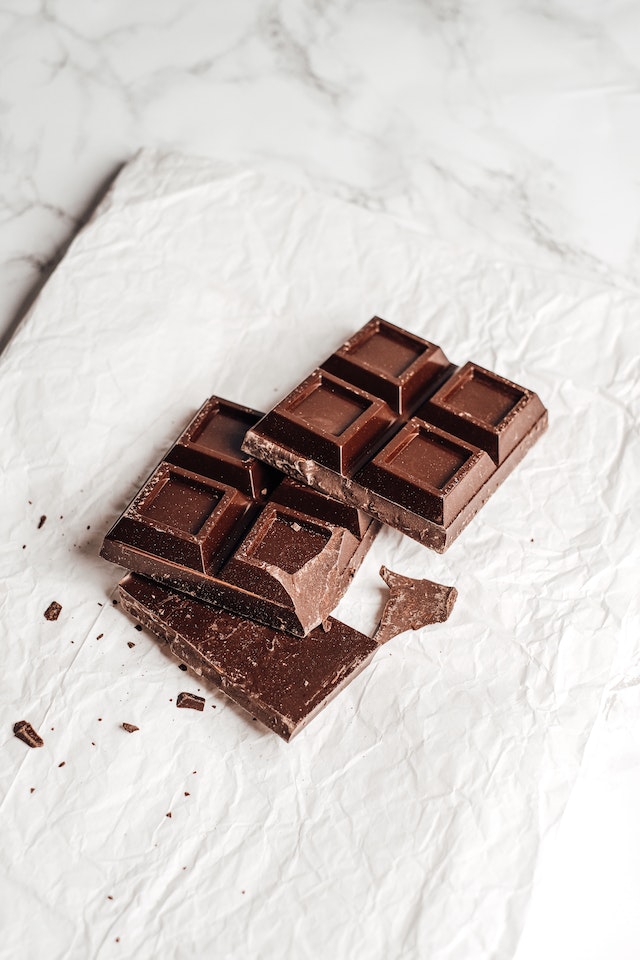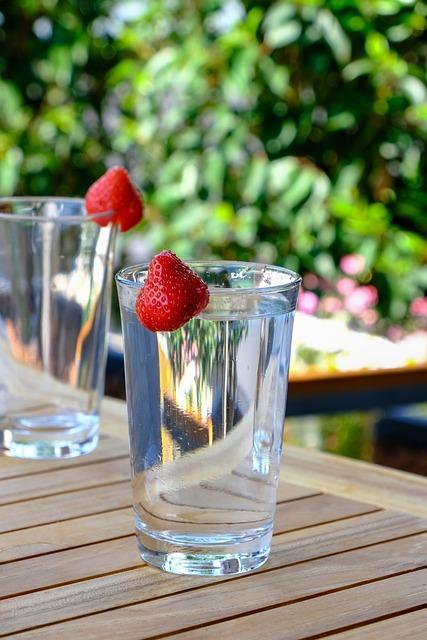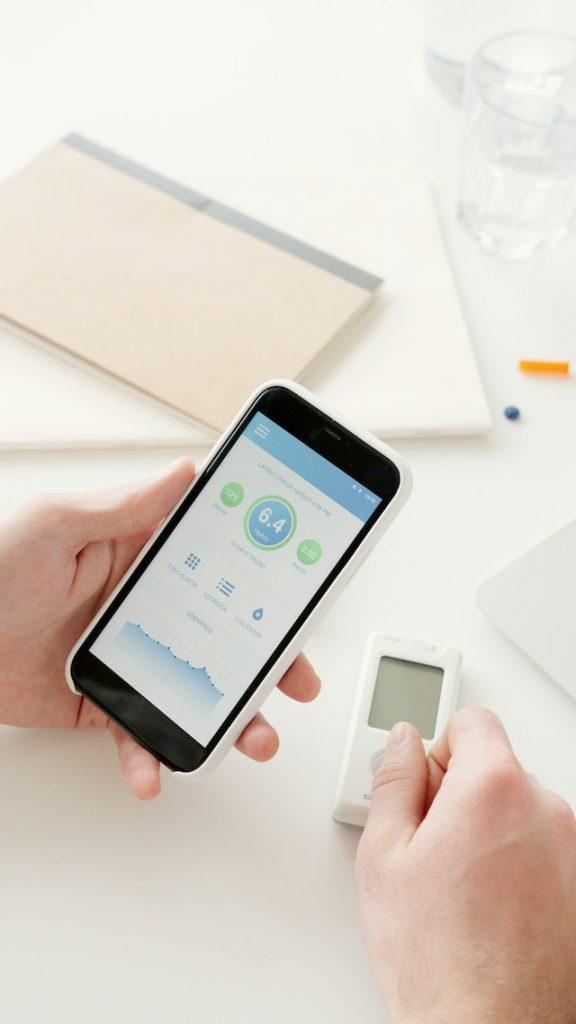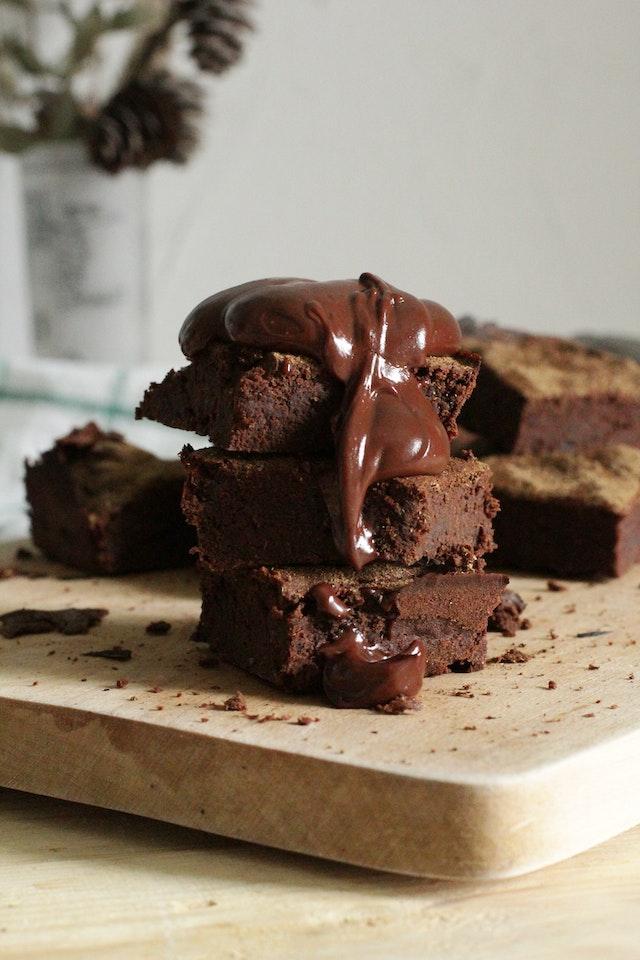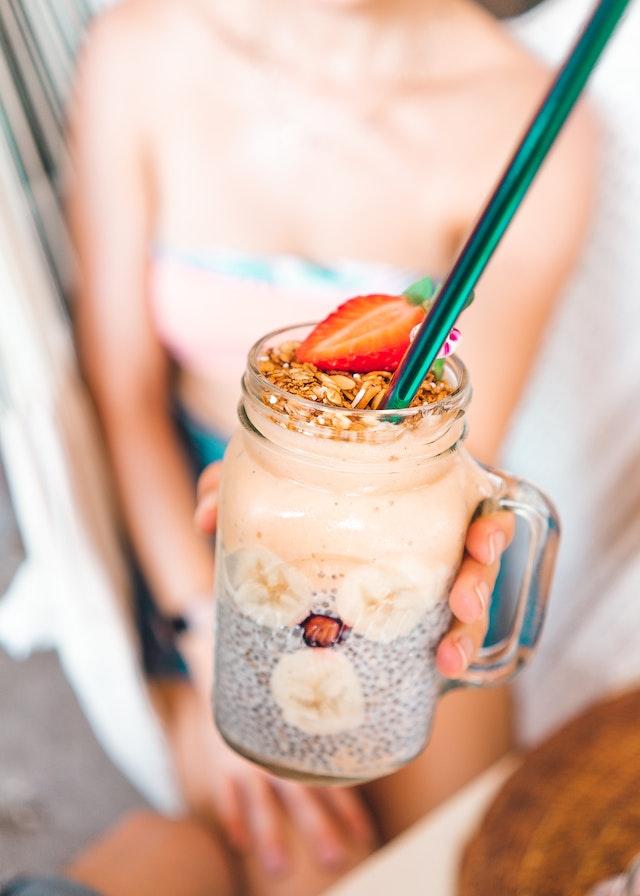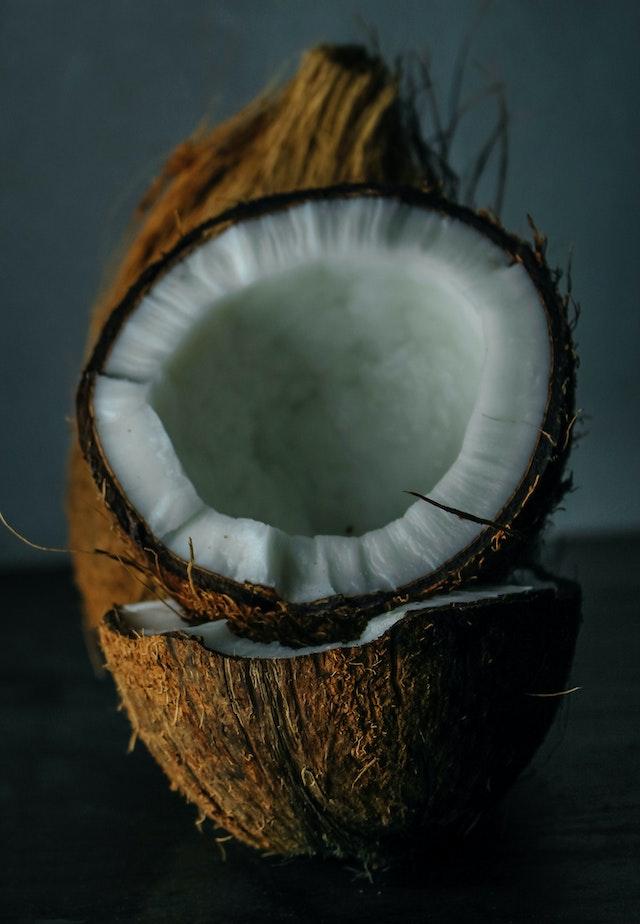Archive for November 2022
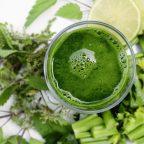
Diabetic Smoothies
Although having diabetes does not require you to forgo all of your favorite foods, you still need to make healthier eating selections. Consuming a lot of fruits and vegetables is a healthy option because they are high in nutrition but low in calories.
Different fruits and vegetables are better than others at helping you control your diabetes. Look for products with a low glycemic index and load, which means they will not cause a blood sugar surge.
To strengthen your bones and supply healthy gut bacteria, it is crucial to consume a lot of dairy products high in calcium and probiotics. Low-fat milk, kefir, and Greek yogurt are all excellent sources.
Despite the fact that you do not need to consume these meals with a fork or even a spoon, they remain an integral part of any diabetes diet. One smoothie can include a lot of nourishment while still being a tasty pleasure. You can regularly eat these sweets as long as you stick to healthy foods and do not add additional sweeteners.
Just keep in mind to count the fruit you add to your smoothies as part of your daily fruit intake, so you do not consume too many carbohydrates. If you consume too much sugar, even natural sugar might raise your blood sugar levels.
What is a diabetic smoothie?
Delicious, simple smoothie recipes that are low in carbohydrates and free of added sugar are included in this collection of diabetic-friendly smoothies. If they are a good source of fiber and protein, bonus points are awarded.
Here are 6 diabetes-friendly smoothie ideas to get you started.
STRAWBERRY BANANA PROTEIN SMOOTHIE
I cannot decide whether to use fresh or frozen strawberries for this recipe, so I go with what’s available. In contrast to frozen strawberries, which have a thicker (nearly slush-ice) consistency, fresh strawberries have a richer flavor. Amazing flavors can be found in both.
Simply by increasing the smoothie’s creaminess without overpowering the flavor of the banana, you can add a small amount. The strawberries should continue to be the main attraction.
The vitamins and minerals in bananas are also abundant. They are ideal for a shake after working out.
Simply combine the ingredients in a blender, and blend the mixture to make this recipe! Really simple, no?
Here’s the process:
Step 1: Blend all of the ingredients in a blender until well combined (I use my Nutribullet).
Step 2: As needed to get the appropriate consistency, add water to the smoothie. Add as much water as you would like gradually after starting with a small amount.
Step 3: To make the smoothie thicker (almost like slush ice) consistency, serve it over ice or top it with frozen fruit. A wonderful shake for a healthy snack or fueling yourself after exercise may be made in just three easy steps.
SPINACH SMOOTHIE (LOW-CARB & GLUTEN-FREE)
Nut butter, yogurt, and avocado are added to this delectable spinach smoothie to give it more creaminess. It is a fantastic way to start your morning with some lush greens.
• 2 tablespoons nut butter of choice
• ½ cup plain Greek yogurt
• ½ avocado (pitted)
• ¼ cup milk (or almond milk)
• 1 teaspoon vanilla extract
• 2 cups fresh spinach
• a few drops of sweetener (to taste)
• 1 cup ice
Instructions
i. The blender should be filled with all the ingredients minus the ice. Mix until emulsified.
ii. When the ice is mostly pulverized, add it and pulse one more. The mixture should be smooth and creamy after blending.
iii. A blueberry smoothie that is vegan (Low-Carb, High-Protein)
iv. Rich, creamy, and loaded with antioxidants is this simple vegan blueberry smoothie!
v. Use it to chill off after a workout or as a delectable afternoon snack.
Only 5 ingredients are required for this dish.
Ingredients
• 14 oz. canned unsweetened coconut milk
• 1 /2 cup unsweetened almond milk
• 1/2 cup blueberries (fresh or frozen)
• 4 tablespoon pea protein powder
• 1 /2 teaspoon vanilla extract
Instructions
i. A high-speed blender should be filled with blueberries, almond milk, pea protein powder, and vanilla.
ii. If you want a thicker smoothie, add the coconut milk gradually.
iii. Until the smoothie has colored a light purple and all the ingredients are thoroughly combined, blend on high.
LOW-CARB GREEN SMOOTHIE
A fantastic source of protein and good fats is this low-carb green smoothie. It becomes incredibly creamy thanks to the avocado and almond butter, and the spinach ups the nutritional value.
Ingredients
• 1 tablespoon almond butter
• ¼ cup protein powder (I used lsopure Vanilla)
• A few drops of Stevia sweetener
• 1 cup almond milk (unsweetened)
• 2 cups spinach
• 1 teaspoon vanilla extract
• ½ cup frozen avocado
• 1 cup ice cubes
Instructions
i. Except for the ice cubes, place all of the ingredients in the blender.
ii. Blend until completely smooth.
iii. Once the ice cubes have been added, reprocess the mixture in the mixer until it is perfectly smooth.
Notes: This recipe yields two smoothies.
CHOCOLATE AVOCADO SMOOTHIE
Rich, creamy, and loaded with a killer combination of nutritious, mouthwatering ingredients, this simple chocolate avocado smoothie with coconut milk is a must-try! Additionally, it is vegan, low-carb, and gluten-free.
Ingredients
• 1 /2 ripe avocado
• 3 tablespoon cocoa powder
• 1 cup full-fat coconut milk
• 1 /2 cup water
• 1 teaspoon lime juice
• pinch mineral salt
• 6-7 drops liquid Stevia
• Fresh mint (for decoration)
Instructions
i. In a blender, combine all the components.
ii. Blend at a high speed until the mixture is smooth and creamy. To taste, add additional liquid Stevia if required.
iii. If preferred, garnish with fresh mint before serving.
Notes: A chocolate avocado smoothie can be made using this recipe for two serves.
LOW-CARB WATERMELON SMOOTHIE WITH MINT
It only takes a few minutes to prepare this low-carb watermelon, mint, and lime smoothie, which is wonderfully cooling.
Ingredients
• 2 cups watermelon (cubed and chilled)
• 1 lime (juiced)
• 5 drops stevia liquid (or to taste)
• ½ cup soy milk
• 5-10 fresh mint leaves (to taste)
• 3 cups ice
Instructions
1. Blend the watermelon, lime juice, stevia, soy milk, and mint in a blender.
2. Blend until absolutely smooth.
3. Ice should be added.
4. Serve the smoothie right after pulsing to include it.
Notes: This watermelon smoothie recipe makes enough for 4 servings. One cup is the size of each serving.
CINNAMON ROLL SMOOTHIE
This smoothie that tastes exactly like a cinnamon roll is nutritious, tasty, and wonderful.
Ingredients
• 1 cup almond milk
• 2 tablespoons vanilla protein powder
• 1 /2 teaspoon cinnamon
• 1 /4 teaspoon vanilla extract
• 2 teaspoons Stevia sweetener
• 1 teaspoon flax meal
• 1 cup ice
Instructions
Add the ice last after adding all ingredients to the blender. Until well combined and thickened, mix on high for 30 seconds.
FAQ
What smoothie is best for diabetics?
• Low-carb Smoothies for Diabetics
• Strawberry Banana Protein Smoothie.
• Vegan Blueberry Smoothies.
• Low-carb Smoothie Bowl with Berries.
• Green Keto Smoothie with Avocado and Peanut Butter.
• Chocolate Avocado Smoothie.
• Strawberry Basil Smoothie.
• Key Lime Pie Protein Shake Smoothie.
• Cinnamon Roll Smoothie.
I sincerely hope you take pleasure in these tasty low-carb smoothie recipes as much as I do. Please share your thoughts about these diabetic-friendly low-carb smoothie recipes in the comments if you have tried any of them.
Are smoothies good for diabetics?
Smoothies can be a useful addition to a diabetes diet if they contain fiber, protein, and healthy fat. People with diabetes should steer clear of smoothies made entirely of fruit and be careful about how many carbohydrates they consume in each smoothie since this will have an immediate impact on their blood sugar levels.
Is a banana smoothie OK for diabetics?
Bananas are a good example of a fruit that is high in fiber, vitamins, and minerals. Even if you have diabetes, bananas can still be a part of your diet.
Will a smoothie spike my blood sugar?
Even though a smoothie is packed to the brim with nutritious nutrients, if the servings are too big or the ingredient ratios are off, the blood sugar levels may surge.
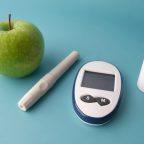
Does standing help with insulin sensitivity?
Can insulin sensitivity be restored
An individual can lower their risk of acquiring type 2 diabetes, even if they are overweight, by standing up during extended periods of sitting, according to a recent study.
By 2030, the UN wants to reduce noncommunicable disease-related fatalities by one-third. This is the third of the Sustainable Development Goals.
The fight against chronic diseases caused by a sedentary lifestyle must begin now, quite literally. According to a recent study, standing can aid in the prevention of significant medical diseases, including type 2 diabetes.
Standing is associated with improved insulin sensitivity, according to research from the Turku PET Centre and UKK Institute in Finland.
Blood sugar levels and metabolic processes in the body are controlled by insulin. However, factors like being overweight can interfere with the way the body’s insulin hormone works, resulting in a reduction in insulin sensitivity and a higher chance of developing chronic illnesses like type 2 diabetes.
The body’s cells’ receptivity to insulin is referred to as their insulin sensitivity. The body’s cells can utilize blood glucose more efficiently when there is high insulin sensitivity, which lowers blood sugar levels. This sensitivity may benefit from some dietary and lifestyle adjustments.
What is insulin resistance?
Insulin tolerance, or reduced insulin sensitivity, is a condition in which a person’s body has developed a resistance to the hormone, decreasing its potency. More insulin is therefore required to convince the liver to continue storing glucose and the fat and muscle cells to take up glucose.
Low insulin sensitivity occurs when there is insulin resistance. The opposite is true if you have low insulin resistance and are sensitive to insulin. The health benefits of insulin sensitivity outweigh those of insulin resistance. When cells stop responding to the hormone insulin, it is said that insulin resistance occurs.
What are the symptoms of insulin resistance?
You will not experience any symptoms if you have insulin resistance and your pancreas is able to produce more insulin to keep your blood sugar levels within a healthy range.
Although the cells in your pancreas that produce insulin might deteriorate and insulin resistance can worsen over time. A raised blood sugar level (hyperglycemia), which does result in symptoms, is eventually caused when your pancreas is no longer able to generate enough insulin to overcome the resistance.
Symptoms of high blood sugar include:
• Increased thirst.
• Frequent urination (peeing). Increased hunger.
• Blurred vision.
• Headaches.
• Vaginal and skin infections.
• Slow-healing cuts and sores.
Prediabetes frequently goes unnoticed for years by many people. It is possible for prediabetes to go undetected before turning into Type 2 diabetes. The following signs and symptoms are possible in some prediabetic individuals: –
People with diabetes are more prone to consequences like heart disease, stroke, blindness, kidney failure, and kidney stones, as well as an increased risk of dying young. The disease, which accounts for 1.5 million deaths annually throughout the world, affects one in eleven people.
Standing improves insulin production.
Although it is well known that exercise can benefit people with diabetes and other noncommunicable diseases, the Finnish study was unique in that it focused specifically on how inactivity affects the production of the hormone insulin.
The results, which were reported in the Journal of Science and Medicine in Sport, showed that even among inactive adults who were more likely to acquire type 2 diabetes, insulin function improved when research participants broke up extended periods of sitting by standing up. No matter how long a person sat, how active and fit they were, or whether they were overweight, standing improved their insulin levels.
A worldwide problem
All around the world, noncommunicable diseases (NCDs) like diabetes, heart disease, cancer, stroke, and chronic lung illnesses are becoming more and more of an issue. So much so that the third Sustainable Development Goal (SDG) of the United Nations sets a 2030 aim of a reduction of one-third in premature deaths due to noncommunicable diseases.
The World Health Organization estimates that these lifestyle diseases account for 41 million deaths annually or more than 70% of all fatalities globally (WHO). The fact that more than two-thirds of these fatalities occur in low- and middle-income nations highlights the connection between a poor lifestyle and diseases.
Diabetes, which accounts for 1.5 million annual fatalities worldwide, affects 1 in 11 people.
An individual can lower their risk of acquiring type 2 diabetes, even if they are overweight, by standing up during extended periods of sitting, according to a recent study.
By 2030, the UN wants to reduce noncommunicable disease-related fatalities by one-third. This is the third of the Sustainable Development Goals.
Take a literal stance against chronic diseases of a sedentary lifestyle now. According to a recent study, standing can aid in the prevention of significant medical diseases, including type 2 diabetes.
Standing is associated with improved insulin sensitivity, according to research from the Turku PET Centre and UKK Institute in Finland.
Blood sugar levels and metabolic processes in the body are controlled by insulin. However, factors like being overweight can interfere with the way the body’s insulin hormone works, resulting in a reduction in insulin sensitivity and a higher chance of developing chronic illnesses like type 2 diabetes.
A stroke, blindness, renal failure, and heart disease are among the consequences that can affect people with diabetes.
Diabetes patients are more at risk for early death as well as complications like heart disease, renal failure, blindness, and stroke. The illness, which affects one in eleven people globally and results in 1.5 million deaths annually, is a killer.
Standing improves insulin production.
Although it is well known that exercise can benefit people with diabetes and other noncommunicable diseases, the Finnish study was unique in that it focused specifically on how inactivity affects the production of the hormone insulin.
The results, which were reported in the Journal of Science and Medicine in Sport, showed that even among inactive adults who were more likely to acquire type 2 diabetes, insulin function improved when research participants broke up extended periods of sitting by standing up. No matter how long a person sat, how active and fit they were, or whether they were overweight, standing improved their insulin levels.
Noncommunicable diseases like type 2 diabetes can be avoided with regular physical activity.
Along with a poor diet, inhaling tobacco smoke, abusing alcohol excessively, and lack of physical activity are four long-term key risk factors. 1.6 million fatalities per year are thought to be brought on by inactivity or inadequate exercise.
What’s the solution?
The WHO urges people to alter their bad dietary and lifestyle habits in order to prevent the emergence of NDCs.
Programs for detection, screening and treatment are essential components of managing NDCs, but many individuals in low- and middle-income countries have inadequate access to healthcare.
Even while there is not a single way to guarantee that more people have access to global healthcare systems, policy initiatives like the WHO’s Global Coordination Mechanism on the Prevention and Control of NDCs serve as a foundation for cooperation in the effort to address this rising issue.
FAQ
Does standing lower insulin?
Even for sedentary adults who were more likely to acquire type 2 diabetes, the study’s findings, which were published in the Journal of Science and Medicine in Sport, showed that when participants broke up extended periods of sitting by standing up, their insulin function improved.
How do you reduce insulin sensitivity?
The greatest strategy to fight insulin resistance is likely to be through exercise. In both the short and long terms, exercise can significantly lower insulin resistance. Insulin resistance can be decreased with weight loss. In order to treat insulin resistance, no drugs have been explicitly approved.
Does sitting increase insulin resistance?
Acute exercise is insufficient to reverse all of the alterations caused by sitting since it raises insulin resistance and affects the transport and oxidation of fatty acids in muscle tissue.
Does walking spike insulin?
The findings of this study demonstrate that walking exercise dramatically reduces serum levels of the cytokine known to be associated with insulin resistance, as well as insulin function and the insulin resistance index by lowering abdominal fat.
Can insulin sensitivity be reversed?
Your body may respond to insulin more favorably if you exercise and, if necessary, lose weight. In those with prediabetes, making simple changes, such as eating healthier foods and exercising more to lose weight, can help reverse insulin resistance and prevent or delay type 2 diabetes.
What does high insulin sensitivity feel like?
Severe hunger or thirst having a hunger pang even after eating. Frequent or increased urinating tingling in the feet or hands.
How long does it take to fix insulin sensitivity?
To begin the process of correcting insulin resistance, a minimum initial lengthy fast of 36 to 3 days may be required. Fung recommends initial fasts ranging from 7 to 21 days for people who are very fat. The longest known fast under medical supervision lasted more than a year in a person weighing more than 460 lbs.
Should diabetics keep their feet up?
Additionally, have a thorough inspection performed by your foot doctor every year (or more frequently if you have nerve damage), during which the feeling and blood circulation in your feet will be examined. Continually pump blood. Put your feet up when you’re sitting and spend a few minutes at various points during the day wriggling your toes.
Does belly fat mean insulin resistance?
Insulin resistance and type 2 diabetes are more likely to occur as a result of abdominal fat accumulation than any other type of body fat. Inflammation of abdominal fat is recognized to be hazardous, but the cause of the inflammation has been difficult for researchers to pinpoint.
Does weight loss fix insulin resistance?
Achieving and maintaining a healthy weight can help people who already have diabetes or are at high risk of developing it reduce their risk of developing insulin resistance, prediabetes, diabetes, and the health complications that can arise from these conditions.

Diabetic Gifts
Are you searching for the ideal diabetic Christmas gift for a friend or family member who has the disease? There is no need to search further.
The list of my favorite diabetic presents, which I believe are appropriate for any occasion, is provided below. You should think about whether people with diabetes would value a gift before making any purchases for them.
Theoretically, you may give someone who has diabetes any gift in the world. Still, occasionally it is fun to find something themed, humorous, and practical for the disease.
All of the items I have listed below that are diabetic-themed are things I truly like and would love to get because I appreciate all presents. I have divided these wonderful gifts into various themed groups to make it easier for you to find what you are looking for.
Wherever it was possible, I have also included links to products, albeit some of them might not be accessible in all nations.
Practical Diabetes Gift
On the market, there are a ton of pretty cool tools, gizmos, and gadgets that make a living with diabetes simpler or more fashionable. I will go over some of the best in the section below.
Myabetic Cherise Diabetes Handbag
In terms of fashionable and useful bags for people with diabetes, Myabetic is a front-runner. There is something for everyone, and to be really honest, they have made a product that actually encourages you to take all of your diabetic supplies with you in style.
Even evening-wear bags for those romantic nights are available, along with bags for traveling with diabetes and elegant backpacks. You may see some of my favorites in the list below.
Myabetic Marie Diabetes Crossbody
This is a really fashionable purse that is ideal for days when you are going out for coffee with friends, exploring a new city, or on a special date or occasion. The black version is my favorite because it complements every outfit. All of your diabetes supplies, including your blood glucose meter, CGM receiver, and insulin, are hidden in compartments in it. It can also serve as a bag, holding items like your phone, wallet, and lipstick. The ideal handbag for women! Particularly when passing through airport security.
Myabetic Banting Diabetes Supply Case
You can be sure to discover a color for this classic case that fits your style and personality because it is available in so many distinct hues. If you have diabetes and travel, this is a great everyday gift for your supplies because it fits comfortably in a larger luggage or backpack.
Additionally, it can accommodate a variety of items, including test strips, a blood glucose meter, two insulin pens, syringes, and insulin vials. Additionally, it is a fantastic alternative for both men and women of all ages due to its style and color scheme.
Myabetic Edelman Diabetes Backpack
Personally, I like this the best. It is a terrific method to combine diabetes and style because it is really fashionable, available in a variety of colors, and simply all-around great. I adore its intelligence and the fact that I can never tell it is holding medical goods.
This diabetes gift also contains a front area that can hold your critical diabetes testing supplies, such as a glucose meter, test strips, insulin pens, and vials. It also has an internal pocket that is insulated, so you can put a cold pack inside to keep your insulin cool.
What a wonderful thing! Although this item is probably the costliest in the store, I believe it is totally worth the cost, given the quality, elegance, and convenience you receive. Additionally, I think this is fantastic for young people who might feel a little self-conscious about having diabetes.
Sugar Medical – Insulated Diabetes Sling Backpack
While ladies can certainly use it, it appears like this bag was designed with males in mind. The bag is the ideal backpack that you may carry on sports days, runs, or even hiking. It comes in a variety of fantastic colors.
Additionally, this diabetic gift basket contains an insulated compartment for juice boxes, glucagon, a cold pack, or a water bottle, in addition to holding all of your necessary diabetic supplies like testing strips, lancets, insulin, and many more.
When you are out and about, taking long walks, or just traveling in general, Frio, an insulin cooling case, is a terrific method to keep your insulin cool. It is a terrific, practical concept because it is also the kind of item you frequently forget to buy. You are guaranteed to discover one that someone will adore as a present because they are available in a wide range of sizes and designs.
Diabetic Accessories
You may spruce up your diabetic devices with the various attractive stickers that are readily available today. They do not have to be monotonous any longer. Use one of several incredibly cool designs to express yourself.
Take a look at some of the below-listed accessories for the following gadgets:
• FreeStyle Libre
• Type 1 Tactical Insulin Pump Holster (Medtronic)
• Dexcom
Birthday Gifts for Diabetics
I have ideas for humorous novelty gifts relating to diabetes if you want to buy a loved one or friend. Your loved one with diabetes is sure to like these and they make fantastic birthday presents.
Younger boys and girls who need a little encouragement to know they are brave and amazing will love receiving this. It is quite entertaining and enjoyable because unicorns are featured on it. Offered in five different hues.
• Zombies Ate My Pancreas Shirt
A diabetes awareness shirt that sells well. Available in six colors and for both men and women.
• A Novelty Mug
Classic diabetes statements can be found on a ton of amazing mugs that are currently available. If I had enough space, I might start a collection. Below is a list of some of my favorites. To give a friend, they are wonderful, straightforward gift. “Be nice to diabetes, we deal with enough pricks already.”
• “Proud Owner of a Useless Pancreas“
• “I’m Not Drunk I’m Diabetic“
• “Dear Diabetes, You Picked the Wrong Bitch”
A foot massager of some kind might be a good idea to help maintain those feet healthy and ease any discomfort caused by neuropathy since people with diabetes are prone to foot problems if complications with their blood sugars occur over an extended period of time. There are several options available that will fit all price ranges.
However, I believe that the TheraFlow Foot Massager Roller is both cool and affordable. This is a fairly amazing approach to help if you’re looking for gifts for those with diabetic neuropathy.
• A good book
There are a ton of books on blood sugar control and diabetes that are available. Some of the most well-liked diabetic books available are listed below: –
• The Diabetes Diet
• The Complete Diabetes Cookbook
• Diabetes Meal Planning and Nutrition for Dummies
• Complete Diabetes Guide
• Even Superheroes Get Diabetes – Insulin comic for kids
Diabetic Gifts for Men
The perception is that men are generally a little trickier to buy for. There are goods available that are suitable for men as well, despite the fact that the market for diabetic accessories appears to be geared toward women.
• Fitbit Charge 5 – Made for men with busy lifestyles and who love fitness
• Divoti Sport ID Medical Alert Bracelet
• Men’s Diabetic Outdoor Alpaca Socks
Frequently Asked Questions
Is a fruit basket a good gift for a person with diabetes?
Apples, pears, oranges, and other citrus fruits, as well as peaches, apricots, and nectarines, are your best choices. A simple fruit basket can be elevated to the status of a remarkable present by adding unusual types of any of these, or at the very least, a variety of colors and forms.
How do you cheer up someone with diabetes?
You cannot cure the sickness, but there are many ways you may provide kindness, support, and support.
• Do not nag!
• Encourage healthy eating
• Attend a diabetes support group with them
• Offer to attend doctor appointments
• Be observant of drops in blood
• Exercise together
• Be positive
Are nuts good a good gift for people with diabetes?
For people with diabetes, nuts are an excellent choice for a snack since they offer the best of all worlds: low in carbohydrates, high in protein, fiber, and good fats, and they make you feel full.
Is sugar-free chocolate good for people with diabetes?
Despite the fact that there isn’t a distinct “diabetic chocolate,” “sugar-free chocolate” usually refers to chocolate that has been sweetened using calorie-free or low-calorie sugar replacements. Since these alternatives have no effect on blood sugar, they are typically safe for people with diabetes.
What can I put in a diabetic gift basket?
Apples, pears, oranges, and other citrus fruits, as well as peaches, apricots, and nectarines, are your best choices. A simple fruit basket can be elevated to the status of a remarkable present by adding unusual types of any of these, or at the very least, a variety of colors and forms.

15 Healthy Foods for the Pancreas
Both digestion and blood sugar regulation are critically dependent on the pancreas. The six-inch-long organ, located beyond the stomach, secretes digestive enzymes that aid in the body’s breakdown of proteins and carbs.
Additionally, it creates hormones that control blood sugar and aid in the digestion of food. One of the most important factors in maintaining a healthy pancreas is diet.
1. Garlic
While causing the pancreas to create more hormones, garlic naturally lowers blood sugar levels. The ideal method to take advantage of the therapeutic effects of garlic is to consume a clove or two raw on an empty stomach.
Even if it is unpleasant to eat, there are still advantages to mixing it with other foods. Garlic helps the pancreas and also helps with infection prevention, circulation improvement, and treatment of intestinal parasites.
2. Spinach
Iron and vitamin B are both found in spinach, and vitamin B is necessary for the pancreas to operate properly. This advantage is also provided by other leafy vegetables like Swiss chard and kale.
Spinach considerably lowers the likelihood of inflammation, which lowers the risk of pancreatic cancer. It also contains MGDG agents, which, according to a study, significantly inhibit the pace of proliferation of cancer cells in the pancreas.
3. Broccoli
Sulfur, which is present in broccoli, aids in the detoxification of tissues like the pancreas. The cruciferous vegetable is also high in apigenin, which helps lessen or prevent neuroinflammation and Alzheimer’s disease.
Since lengthy cooking can destroy many nutrients, broccoli is most beneficial when consumed raw or only lightly steamed. The benefits of this cuisine have been supported by several research over the years, particularly in terms of type 2 diabetes management and prevention.
4. Grapes
For the pancreas, red grapes are good. They have antioxidants, such as resveratrol, which guard the tissues against harm. Inflammation and blood vessel damage are both reduced and prevented by resveratrol.
Grapes can enhance glucose uptake by the cells and carbohydrate metabolism, both of which affect how sensitive the body is to hormones.
5. Sweet Potatoes
Beta-carotene, a potent antioxidant found in abundance in sweet potatoes, supports pancreatic health by preserving pancreatic cells and hormone control. Regular intake of sweet potatoes releases natural sugars into the bloodstream more gradually than processed sugar does, which causes spikes in blood sugar.
6. Blueberries
In general, berries are good for you, but certain substances in blueberries urge cancer cells to self-destruct, not just in the pancreas but also in other organs.
Antioxidants found in abundance in blueberries guard against oxidative stress, which lowers the risk of pancreatic cancer by reducing pancreatic free radical damage.
Numerous studies have found that consuming fresh blueberries can also lower the risk of acquiring type 2 diabetes. They also lessen the probability of inflammation and vascular damage caused by diabetes.
7. Yogurt
Yogurt contains probiotics that assist the digestive system in functioning better, which has a direct impact on the pancreas’ health. Yogurt may be the only dairy product that can support a lower risk of type 2 diabetes, according to several research. The best yogurt to eat is always that which is marked as having “active cultures.”
8. Reishi Mushrooms
Reishi mushrooms, which have been used in traditional Chinese medicine for millennia, have anti-inflammatory and anti-swelling properties.
Beta-glucan polysaccharides and triterpenes lessen the risk of pancreatic cancer, and they are also highly prized for their antioxidant content, which mostly consists of phytochemicals that inhibit free-radical damage.
Reishi mushrooms have a variety of health advantages, one of which is their ability to stop cancer cells from harming healthy body components.
9. Licorice
Since it contains a lot of amorfrutin, which helps lessen pancreatic inflammation and help lower blood sugar levels, pure licorice has been used for thousands of years as a herbal remedy.
Amorfrutin also increases hormone resistance and lowers the likelihood of fatty liver development. The simplest approach to take advantage of the root’s many health benefits is to drink licorice root tea.
10. Horseradish
Horseradish is more than simply a wonderful, hot condiment. Because of the quantity of glucosinolates in the root, it can also benefit the pancreas’ health. These substances could assist get rid of known carcinogens that might cause pancreatic cancer as well as slow the formation of malignant tumors.
11. Lemon
Lemons assist the pancreas fight oxidation and are a fantastic source of vitamin C. The pancreas suffers from disease-causing cell damage as a result of oxidative stress.
According to studies, vitamin C prevents this process from happening and strengthens the pancreas cells’ immune system, so preventing harm. Lemons are also a good source of magnesium, which helps the pancreas produce enzymes and combat the effects of inflammation.
12. Oregano
The flavonoids in oregano may be able to destroy pancreatic cancer cells in part because of the presence of two chemical substances called luteolin and apigenin, though more studies are required to confirm this.
By reducing the likelihood of oxidation and the formation of scar tissue, luteolin, especially in those with diseases, helps to minimize pancreatic inflammation.
A unique enzyme known as GSK-3 was also discovered to be blocked by apigenin, according to researchers. This enzyme inhibits apoptosis, which causes cancer cells to die. Overall, including oregano in meals exposes people to these flavonoids and may support the pancreas’ health.
13. Calendula
Insulin, a hormone that aids in normal sugar metabolism in the body, and its companion, amylin, a hormone that encourages satiety, are produced and secreted by pancreatic T2 cells.
In diabetics, the insulin-producing beta cells are harmed, and as a result, they are less able to make insulin, which results in hyperglycemia.
Additionally, these cells are susceptible to oxidative and nitrosative stressors, which might worsen their condition. According to a study done on animal models, calendula naturally combats these stresses and even aids in the repair and regeneration of the pancreas.
14. Haritaki
Long used for both prevention and treatment of vascular, visceral, and muscular illnesses, haritaki, Terminalia chebula, is a common ingredient in Tibetan and Ayurvedic medicine.
The pancreas may even become more effective because of the dried fruit in it, which is a well-known anti-diabetic ingredient. Haritaki may boost the creation of insulin and improve the transit of sugar, giving muscles the energy, they require, according to studies.
In addition, it takes longer for carbohydrates to break down, which may aid in keeping blood sugar levels balanced.
15. Goldenseal
Goldenseal is a traditional remedy used by Native Americans to treat infections as well as to improve the capacity and function of the pancreas and other critical organs.
Berberine, the active component, is an anti-inflammatory alkaloid that strengthens pancreatic beta cells while also lowering fasting blood sugar and increasing the sensitivity of insulin receptors.
A well-known antiseptic for small wounds is goldenseal. People with diabetes who are susceptible to wound infections should find this very helpful.
Frequently Asked Questions
How can I repair my pancreas naturally?
Concentrate on consuming meals that are high in protein, low in animal fats, and high in antioxidants to maintain the function of your pancreas. Try beans, lentils, clear soups, and dairy substitutes, as well as lean meats (such as flax milk and almond milk). These will be easier for your pancreas to process.
How do you cleanse your pancreas?
Drinking lots of water and eating fresh fruits and vegetables are two of the best things you can do to help your pancreas get clean. Eating fruit with a high-water content is especially important.
Moreover, eat more meals high in fiber. For appropriate digestion and intestinal health, fiber is required.
How do you give your pancreas a rest?
• Until you feel better, sip on clear drinks and consume bland foods.
• Eat a low-fat diet up until your physician declares that your pancreas has recovered.
• Keep alcohol out of your system.
• Take medications with caution.
• Take antibiotics exactly as advised by your doctor.
• As you wait to feel better, get more sleep.
How do you make your pancreas start working again?
Some lifestyle changes you can make include exercising, managing your stress, losing weight, and detoxifying. These aid in boosting the pancreas’ beta cells’ ability to operate and improve insulin output.
How long does it take for the pancreas to heal?
With acute pancreatitis, the majority of patients recover within a week and are strong enough to go home after 5–10 days. In contrast, recovery takes longer in severe cases because complications that call for additional care may arise.
Which fruit is good for the pancreas?
Dark, green vegetables, red berries, blues, sweet potatoes, grapes, carrots, walnuts, and pomegranates are just a few examples of foods high in antioxidants that are advantageous. However, consume avocado, olive oil, fatty fish, nuts, and seeds in moderation.
What is the fastest way to cure pancreatitis?
A few days of rest and treatment are typically enough to cure mild acute pancreatitis. The following additional procedures might be used to treat more severe pancreatitis: Surgery.
If gallstones are to blame for your pancreatitis, your doctor might advise cholecystectomy surgery, which involves removing the gallbladder.
Is coffee good for pancreatitis?
A study that was published in Digestive Diseases and Sciences suggests that drinking a lot of coffee may lower your risk of developing pancreatitis.

The Difference Between Type 1 and Type 2 Diabetes
Despite having names that sound similar, type 1 and type 2 diabetes are two separate illnesses with distinctive causes.
Type 1 diabetes and type 2 diabetes are fundamentally distinct from one another since type 1 is thought to be brought on by an autoimmune response and manifests in infancy.
Long-term lifestyle variables like inactivity and obesity are linked to the development of type 2 diabetes, which occurs over a number of years. The diagnosis is typically made in adults.
However, family history may be important. Type 1 diabetes risk factors are not completely understood.
Causes Of Type 1 Diabetes
The immune system of the body defends against outside intruders, such as dangerous germs and viruses.
• It is thought that an autoimmune response is what causes type 1 diabetes. When a person has type 1 diabetes, their immune system misidentifies healthy cells from their body as foreign invaders.
• The insulin-producing beta cells of the pancreas are attacked by and destroyed by the immune system. The body is unable to manufacture insulin if these beta cells are gone.
Why the immune system occasionally targets the body’s cells remains a mystery to researchers. It might be influenced by genetic and environmental elements, such as virus exposure.
There is a continuous investigation into autoimmune illnesses. Type 1 diabetes is not brought on by diet or way of life.
Causes Of Type 2 Diabetes
- Insulin resistance is a complication of type 2 diabetes. Although the body continues to manufacture insulin, it is unable to utilize it efficiently.
- Although there are a number of lifestyle factors, such as being sedentary and being overweight, that may be involved. Researchers do not yet fully understand why some people develop insulin resistance while others do not.
- Additional genetic and environmental factors might also be important. Your pancreas will attempt to make up for this by generating more insulin if you acquire type 2 diabetes. Glucose builds up in your bloodstream as a result of your body’s inability to utilize insulin properly.
How Does Diabetes Affect the Body?
Type 1 and type 2 diabetes are the two most common varieties.
• Each kind of diabetes is a chronic illness that interferes with your body’s ability to control blood sugar or glucose levels. Your body’s cells run on glucose for fuel, but glucose needs a key to get into your cells. That key lies in insulin.
• Insulin production is absent in those with type 1 diabetes. It is comparable to being locked out.
• In the later stages of the disease, type 2 diabetics frequently produce insufficient insulin and do not respond to insulin as well as they should. It’s comparable to having a key that is broken.
• Chronically high blood sugar levels are a risk for both types of diabetes. Diabetes problems are now more likely as a result.
What Are the Risk Factors for Type 1 And Type 2 Diabetes?
Type 1 diabetes risk factors are less understood than type 2 diabetes risk factors.
Some known risk factors are:
- Family history: A person is more likely to develop type 1 diabetes if they have a parent or sibling who has the disease.
- Age: Although type 1 diabetes can develop at any age, children and teenagers are the age group where it most frequently does.
Type 2 Diabetes Risk Factors
Type 2 diabetes is a possibility for you if you:
• Possess prediabetes or have just raised blood sugar
• Have a weight problem or are obese
• Excessive belly fat
• Are not active three times a week or more
• Are older than 45
• Own a history of gestational diabetes, or diabetes while pregnant, and have given birth to a child that weighed greater than 9 pounds.
• Are Black, Hispanic or Latino, American Indian, or Alaska Native people more likely to experience health inequalities because of structural injustices?
• Possess a type 2 diabetic member in close family
• Afflicted with polycystic ovary syndrome
What Are the Symptoms of Diabetes?
Type 1 and type 2 diabetes both have symptoms that might develop if not treated, including:
• Frequent urination
• Feeling very thirsty and drinking a lot.
• Feeling quite hungry.
• Feeling extremely worn out.
• Having vision haze
• Not having your cuts or sores heal completely.
• Extremely dry skin
• Being sick more frequently than usual
• Mood swings, impatience, and accidental weight loss are among the symptoms that type 1 and type 2 diabetics may face.
• Diabetes and tingling in the hands and feet. Diabetes of any kind, including type 1 and type 2, can cause tingling and numbness in the hands and feet. According to the American Diabetes Association, type 1 diabetes patients’ chance of experiencing tingling and numbness is greatly decreased by good glucose control (ADA).
Type 1 and type 2 diabetes show in completely different ways, although sharing many of the same symptoms.
Many types 2 diabetics do not have symptoms for many years, and when they do, they often progress slowly and gradually.
When type 2 diabetes first develops, some people do not even have any symptoms and do not know they have it until serious consequences. Typically, over the course of several weeks, type 1 diabetes symptoms appear suddenly. This kind, formerly known as juvenile diabetes, typically appears in childhood or adolescence. Later in life, type 1 diabetes is, however, a possibility.
How Are Type 1 and Type 2 Diabetes Treated?
Right now, type 1 diabetes has no known cure. Insulin must be regularly given, and blood sugar levels must be tested often in those with type 1 diabetes because they cannot make any.
A few people inject themselves multiple times a day into soft tissue like the stomach, arm, or buttocks. Pumps for insulin are used by others. The body receives insulin through a tiny tube from insulin pumps in a consistent dosage.
Due to the rapid ups and downs in blood sugar levels, blood sugar testing is a crucial component of managing type 1 diabetes.
However, many patients require further assistance. Type 2 diabetes can be controlled and even prevented with diet and exercise. Medications that improve the way your body uses insulin may be prescribed by your doctor if lifestyle changes are ineffective.
A crucial component of managing type 2 diabetes is regularly checking your blood sugar. You cannot determine whether you are achieving your target levels without it.
Blood sugar checks may be advised more frequently or on an as-needed basis by your doctor. Your physician might suggest insulin injections if your blood sugar levels are high.
Can Diabetes Be Prevented?
It is impossible to prevent type 1 diabetes. With certain lifestyle modifications, such as keeping a reasonable weight, you may be able to reduce your chance of getting type 2 diabetes.
Working with your doctor to create a healthy weight-loss plan, increasing your exercise levels, eating a balanced diet, and consuming fewer sugary or highly processed foods are all ways to lose weight if you are overweight.
Careful monitoring can restore your blood sugar levels to normal and stop the onset of serious problems even if you are unable to prevent the disease.
FAQ
Is type 2 diabetes better or worse?
Many times, type 2 diabetes is less severe than type 1. However, it still has the potential to have severe health consequences, particularly in the sensitive blood vessels of your kidneys, nerves, and eyes. A stroke and heart disease are also become more likely by type 2.
Can type 2 diabetes go away?
Type 2 diabetes has no known treatment options. However, it might be feasible to reverse the disease to the point where you no longer require medicine to manage it, and your body is not adversely affected by having blood sugar levels that are too high.
Can walking cure diabetes?
Walking can help lower blood glucose levels and thus improve diabetes control, according to research studies.
Is fasting good for diabetes?
Fasting routines have been shown to be effective in reducing the signs and symptoms of diabetes and addressing some of its underlying causes, according to preliminary studies. However, not everyone should engage in the practice, and many dieticians and medical professionals continue to provide warnings about potential harm to metabolic and blood sugar health.
How do you reset your pancreas?
US researchers claim that by following a certain fasting diet, the pancreas might be encouraged to rebuild itself. In animal studies, diabetes symptoms were cured by restoring the organ’s ability to manage blood sugar levels. According to the study, which was published in the journal Cell, a diet “reboots” the body.

Diabetes and Coconut Oil
Coconuts are often predominantly prevalent in tropical regions. In fact, it is usually a staple in most of the tropical cuisines yielding uniquely tasty and satisfying foods. There are also several approved industrial and cosmetic applications derived from the fibers and several other significant parts.
In addition, coconuts boast a rich nutritional composition which aids in several health benefits. For instance, coconut oil is a unique food that hugely distinguishes coconuts from other foods in that the oil is usually rich in anti-oxidants, energy-boosting triglycerides, and essentially incorporated into versatile medical applications.
Its consumption is also possible in several forms. As such, coconuts have been found to offer a variety of health benefits even to individuals with diabetes.
Coconut oil is often considered a healthy dietary fat that diabetic individuals can consume without fear of health complications. This is because the oil always effectively manages how sugar impacts the body and associated functions.
Nonetheless, there are usually nutrient-rich alternative and healthy oils that individuals can often substitute to suit their preferences like taste and aroma in place of coconut oils. As such, individuals and diabetics can usually opt for oils like extra virgin olive oil instead of forcing oneself on coconut oil alone.
The oil is however healthy and better in managing diabetes compared to butter and other refined oils on the market.
It is however important to check and ensure that the type of coconut oil is appropriate and that you regulate the amount added to the diet.
Nutritional Profile of Coconut Oils
According to the United States Department of Agriculture (USDA), coconut oils contain the following nutrients in specific amounts;
100 grams of coconut oil
- Calories – 892 Kcal
- Total fat – 99.1 g
- Saturated fatty acids – 82.5 g
- Monounsaturated fatty acids – 6.33 g
A tablespoonful of coconut oil
- Calories – 121 Kcal
- Total fat – 14 g
It is significant to understand that by regulating the amount of oil consumed, you can always use varying amounts that best suit your needs. For instance, you can measure 15 grams, 3 teaspoonfuls, or even one tablespoonful of coconut oil every day. Therefore, an individual on a daily 2000-calorie diet should healthily consume one tablespoonful of coconut oil.
Different Types of Coconut Oils
There are several varieties of coconut oils depending on a number of factors such as the method of oil extraction, processing, and even nutrient constituents among others. They include;
Cold-pressed coconut oil
This type of oil is usually considered raw and thus retains all its rich nutrient composition. Cold pressing is the method utilized in the extraction of coconut oil without the utilization of heat or any chemicals.
As such, the method protects and preserves nutrient quality in the extracted coconut oil. Cold-pressed oil is thus usually considered high-quality with abundant phenolic compounds.
Virgin/extra virgin coconut oil
This type of coconut oil is also extracted using the cold pressing method but is usually left un-refined. Unrefined coconut oil has often undergone minor processing and then passed in a centrifuge machine to yield the purest form of coconut oil.
As such, the virgin/extra virgin coconut oils are usually rich in medium chain fatty acids, low in trans fatty acids, and boast a healthy cholesterol profile. This way, the product is healthy and beneficial to diabetic patients.
Hydrogenated coconut oil
This is the other type of coconut oil different from the others in that it has undergone the hydrogenation process. The process turns unsaturated fat components into saturated fats making this type of oil solid at room temperatures. This way, hydrogenated coconut oils boast longer shelf life and are usually generally cheaper than virgin coconut oils.
There are two major categories of hydrogenated coconut oils;
- Partially hydrogenated oils (PHOs) – this is the more dangerous variety with trans-fats and is always in a semi-solid state.
- Fully hydrogenated coconut oils – these are usually better than partially hydrogenated ones but still not good for individual consumption.
The Best Coconut Oils to Buy
There are several varieties of coconut oils on the market making it quite difficult to identify the most suitable for consumption whether by a healthy individual or even a diabetic. As such, when choosing coconut oils;
- Opt for unrefined coconut oils over cheap refined varieties. Refining coconut oil results in a massive loss of significant nutrients due to the processes of extraction, bleaching, and deodorization involved.
- Stick to non-hydrogenated ones and avoid hydrogenated varieties as consuming them increases the risks of introducing unhealthy trans-fat to your food.
- Always avoid coconut oils in plastic containers since leaching of toxins from the plastic may occur over time compromising the quality of the coconut oil.
Coconut Oil and Diabetes
Diabetes is one of the conditions that require lifelong management. For instance, individuals with severe type 1 diabetes regularly take insulin shots whereas those with type two have prescription medications to help with diabetes management.
These regimens are usually supplemented by other approaches to improve an individual’s general health. For example, dietary changes are usually recommended for diabetic patients, and using coconut oil is one such approach popular among many health experts and diabetics. This is because, coconut oil’s rich nutrients like the healthy fatty acids nourish body cells, essentially keeping them healthy and wholly functioning. Coconut oil also helps unclog arteries and has no harmful effects on the body’s sugar/insulin levels.
Some studies conducted over the years have proven that coconut oil products such as virgin and double-filtered coconut oils can potentially reverse certain diabetic parameters.
They found that using these coconut oils improved hemoglobin levels, insulin, lipid profile, and several other renal considerations because of their lack of harmful long-chain fatty acids.
As such, normal folks and diabetics are often encouraged to use it instead of regular cooking oils as they contain healthy nutrients like medium-chain fatty acids and about 50% lauric acid among others.
How coconut oil aids in managing diabetes and associated complications
Contributes to a healthy diet
Coconut oil contributes to a healthy diet as they contain essential and healthy nutrients. For instance, the medium-chain fatty acids are often easily absorbed by the liver cells and as a result, quickly converted from fats to energy components.
Coconut oil also makes your stomach feel full for an extended period limiting overeating. These essentially contribute to significant weight loss. Furthermore, as a portion of plant food, coconut oils also contain disease-fighting phytochemicals and antioxidants which boost health.
There are numerous ways available for utilizing and consuming coconut oil through baking, cooking, or adding to smoothies, soups, and salads among other delicacies to make your healthy diet.
Enhances glucose tolerance
Coconut oils contain phenolic components which facilitate several body functions. For instance, they help in glycemic management probably by mediating anti-inflammatory actions. As such, they manifest anti-diabetic and insulin-sensitizing traits.
Therefore, the high polyphenolic content in coconut oils improves glucose metabolism efficiency, assists in blood sugar management through stimulation of the ketone bodies generation process, and finally aids in the enhancement of insulin sensitivity.
The coconut oil thus functions as a blood glucose regulator leveling the amounts to optimum concentrations in as little as 30 minutes.
Maintains body weight
Coconut oil has been found to aid a lot in weight loss through several modalities. For instance, it reduces appetite by extending the period one feels full, aids in maintaining a healthy lipid profile, promotes healthy thyroid gland function, accelerates metabolism, and increases body energy all of which are parameters for weight loss.
Furthermore, these are supported by a study that concluded that supplementing a regular diet with coconut oil promoted a reduction in abdominal obesity, one of the major drivers of diabetes complications.
Nevertheless, the change is usually quite slow and as such should be supplemented by regular weight loss routines such as exercising, and a healthy calorie-controlled eating plan among others for significant long-term weight-loss outcomes.
Aids in food digestion
Coconut oils mainly consist of medium chain triglycerides (MCTs) such as lauric acid and lipids which are simpler and easy to digest and absorb. Subsequently, fatty acids found in cold-pressed organic coconut oil also help with effective digestion.
Coconut oils are also popular for their natural laxative traits which help with constipation issues and colon cleansing. Finally, it also softens hard stool preventing hemorrhaging, a common manifestation of diabetes among older adults.
Coconut Oil and Type 1 Diabetes
Type 1 diabetes is an autoimmune disorder that affects your body’s ability to produce insulin thereby interfering with the healthy blood sugar regulation process.
As a result, affected individuals usually crave high-glycemic foods. However, the healthy fats in coconut oils can help control and partially minimize such unhealthy cravings by improving digestion, nutrient absorption, and boosting general metabolism.
Studies also indicate that the medium chain fatty acids prevalent in coconut oils also improve cognition and preserve brain function among individuals suffering from severe type 1 diabetes.
Coconut Oil and Type 2 Diabetes
Type 2 diabetes is majorly associated with diet and general lifestyle practices. Since these individuals do not usually respond well to insulin, adding coconut oil to their diets will aid in insulin action.
For instance, the medium chain fatty acids prevalent within coconut oils have been found to sustain insulin action in fat tissues and muscles within a diabetic’s body.
Subsequently, coconut oils also reduce bad cholesterol (LDL) levels in the body and raise good cholesterol levels, thus helping in the fight against type 2 diabetes.
A case study concluded indicated that supplementing an individual’s diet with coconut oil might significantly reduce the need for insulin therapy among this group of diabetics.
These oils also deliver favorable effects on glycemic control due to the rich phenolic compounds and lauric acid. As such, coconut oils are generally suitable and recommended for type 2 diabetics with an increased risk of cardiovascular complications.
Other Significant Benefits of Coconut Oil
Apart from assisting diabetic patients to manage their health conditions, coconut oils also have several other benefits to users. These include;
Preventing and Treating Urinary Tract Infections
Coconut oil is usually regarded as a natural antibiotic and thus can effectively be utilized to work as a natural remedy for UTI prevention and treatment. This anti-bacterial trait comes from the medium-fatty acid chains within the coconut oils which can dissolve the cellular wall of harmful bacteria killing the UTI-causing bacteria in the process.
Bacterial infections of the UTI are usually prevalent among individuals who don’t drink enough or plenty of water always. As such, since several studies have discovered that many people don’t fulfill the desired daily water consumption levels, coconut oil may come in handy on your diet to help prevent and even treat a bacterial UTI.
Moisturizing and Nourishing One’s Lips
Coconut oil is a sealant and like most moisturizing oils, it can trap water in the skin and keep the area moist. As such, it can often be used to moisturize and nourish dry lips.
You should however take note that coconut oils are relatively comedogenic and thus should not be used on the face/skin of individuals prone to natural skin blemishes.
Contributing to Healthy Skin, Hair, and Nails
Coconut oils are fatty acids rich and this help protect hair, skin, and nails in two subsequent ways. First, they trap moisture in the skin preventing and treating skin dryness. Second, they break down lipid-soluble impurities and sebum to effectively remove dirt and oil build-up on the skin.
The Best Ways to Include Coconut Oil in Your Diet
There are several ways to use and add coconut oil to your diet. Coconut oil can be used to enhance flavor in delicacies or substitute regular unhealthy fats with healthy ones. Some other ways of consumption include;
- Addition to smoothies
- Stir-frying
- Cooking, grilling, and baking
- Pre-workout drinks like Bullet coffee or tea
- Salad dressing as an emulsion or oil dressing
Potential Side Effects of Coconut Oil Use
Despite the health benefits associated with taking coconut oils, the use should always be regulated to prevent developing some of these health consequences.
- Too much coconut oil may cause fat deposition on cells resulting in hypertension and increased blood cholesterol levels.
- Coconut oils may often trigger allergic reactions in certain individuals manifesting as nausea, rashes, hives, vomiting, and in some extreme levels, difficulty breathing.
- It may also trigger severe anaphylaxis among allergic persons. This is however quite rare.
- Excess coconut oils in the diet may result in loose bowels, softer stools, and even manifestations of diarrhea.
- Conversion of too many medium chain fatty acids from excess coconut oil consumption to energy may strain the liver giving rise to problems.
Conclusion
Coconut oil has numerous health benefits for individuals and diabetics. However, it is important to keep in mind that it still contains saturated fats that might raise cholesterol levels and many calories that might lead to weight gain if consumed in excess.
As such, coconut oil just like any other food should be taken with great moderation. This way, you will reap the associated health benefits like reducing secondary diabetic complications without any significant side effects.
For instance, coconut oil regulates blood sugar levels and controls diabetics’ cravings for highly glycemic foods. It is also essential that you opt for the best type of coconut oil in the market which is cold-pressed, unrefined, virgin coconut oil and the final product should not have been processed by heat or chemicals.
Abiding by these stipulations will guarantee you get the most out of using coconut oil.
Frequently Asked Questions (FAQs)
Q. Is coconut oil good for your diabetes?
Coconut oil has a low glycemic index and as such often does not boost blood glucose levels on consumption making it an ideal food for individuals with diabetes. It is also the best plant-based source of saturated fat and contains lauric acid, which has antibacterial and antioxidant properties. As such using this oil will prove healthy and immensely good for a diabetic’s health management.
Q. Which oil is best for people with diabetes?
The most recommended cooking oils should be high in Omega-3 and low in Omega-6 fatty acids. Some of the best cooking oils for people with diabetes include coconut and olive oils among others. This is because, oils like coconut oil are usually rich in good cholesterol that maintains a healthy cardiovascular and has potent anti-inflammatory, anti-microbial and anti-oxidant properties which cancel the impacts of damage-causing factors among diabetics.
Q. Does coconut raise blood sugar levels?
No, coconut does not raise blood sugar levels. This is because, its contents such as fiber, healthy fats, and antioxidants immensely aid in lowering blood sugar levels. Furthermore, consistently eating coconuts regulate good cholesterol levels in the body and essentially blood pressure.
Q. Does coconut oil lower insulin?
Not at all. This is because several studies have often concluded that coconut oil can significantly improve and sustain insulin activity in diabetics. Subsequently, the oil has also been found to protect the kidney and associated tissues from diabetes-induced changes.
Q. Is coconut oil good for diabetic dry skin?
Coconut oil is a proven excellent moisturizer for dry skin that immensely boosts skin health through the action of its components. For instance, coconut oils often have anti-inflammatory and antioxidant properties which improve skin health.
Subsequently, it also provides hydration and protection of the dry skin area upon application. Therefore, in general, coconut oil soothes and promotes rapid healing in the area of application and is thus good for diabetic dry skin.
Q. How much coconut oil should I eat in a day?
Coconut oil should be treated just like any other food and thus consumption should be moderated. It can be regular cooking oil or part of your nutrient-based diet. The recommended intake amount is usually having 3 to 4 teaspoons or less a day. You may also opt for one tablespoon which is also enough to satisfy the recommended daily calorie/fat intake.
Q. Are eggs good for diabetics?
Eggs are known to be exceptionally nutritious foods rich in high-quality proteins and healthy fats for the body. And, research suggests that eating one large egg every day may actually reduce the risk of developing diabetes without manifesting any adverse side effects. You may prepare your egg with coconut oil to make an even more healthy cuisine for diabetics.

Can Type 2 Diabetes Be Reversed?
The percentage of adults in the US who have type 2 diabetes or prediabetes is around 49%. When the body’s cells fail to react properly to insulin, type 2 diabetes develops. Instead of being turned into energy in the cells, as a result, this causes glucose (sugar) to accumulate in the blood.
If untreated, type 2 diabetes can result from elevated blood sugar, which is linked to a variety of other issues.
It is erroneously believed that type 2 diabetes is a progressive disease that will only become worse with time. Type 2 diabetes, however, can be a terrible condition. Type 2 diabetes, however, can be reversed, according to numerous scientific research.
What is diabetes reversal?
According to a global group of specialists, diabetes reversal is the process of lowering blood sugar levels below the diagnosis of diabetes Type 2.
When a patient’s A1c falls below 6.0% without the need for diabetes drugs outside metformin, many medical practitioners consider the condition to have been reversed.
Because metformin is not a diabetes-specific medicine and many patients continue taking it for purposes other than blood sugar control, it is not included in the criteria for reversal.
What exactly does all of this signify, then? Since type 2 diabetes is diagnosed when blood sugar levels are elevated, if your blood sugar levels stay normal without the aid of additional diabetes-specific drugs except metformin and you no longer fulfill the diagnostic standards, you have successfully reversed your type 2 diabetes.
Reversal vs. Remission vs. Cure
Reversal and cure are two completely distinct concepts. It is possible to “reverse” type 2 diabetes, but it cannot be “fixed” because the condition will worsen if long-term behavioral changes are not kept up.
Although the definitions of “remission” and “reversal” differ significantly, both terms refer to the process of managing diabetes and bringing blood sugar levels back down to those that are diagnostic.
Remission occurs when blood sugar levels drop to the sub-diabetic range and remain there for more than three months without the use of any diabetes medications.
Types Of Remissions
• Partial Remission – While without medication, blood glucose levels are lower than those of diabetics for more than a year.
• Complete Remission – After taking no medication for at least a year and the blood glucose level has stabilized.
• Prolonged Remission – If the last five years have seen normal blood sugar levels.
Note: You are still regarded as being in diabetes remission and not “cured” even if your blood sugar level has been stable for more than ten years.
How Type 2 Diabetes Can Be Reversed
Treatments that have been shown to reverse type 2 diabetes include the following three types: –
Bariatric surgery
Type 2 diabetes may occasionally be reversed with bariatric surgery, also known as metabolic surgery, but it is costly, has the potential for serious side effects, and frequently loses its effectiveness after a few years.
It is typically not regarded as a “first-line treatment” for reversing diabetes because it is an intrusive surgery.
Very Low-Calorie Diets
Diabetes can be reversed and weight loss can occur quickly on very low-calorie diets, sometimes known as semi-starvation diets. These diets can only be maintained for a short period of time, after which maintaining weight loss and keeping diabetes under control becomes challenging.
Diets with a very low caloric intake, which demand less than 800 calories per day, are typically under medical supervision.
Very Low Carbohydrate Diets
An extremely low-carbohydrate diet is the third therapy. Restricting carbohydrates, and more especially very low carbohydrate nutrition therapy like well-designed ketogenic diets, can fast drop blood sugar, minimize the need for diabetes medications, promote weight reduction, and lessen appetite.
Many of these advances are also sustainable. Very low carbohydrate diets are often defined by an intake of fewer than 50g of total carbohydrates per day.
Can type 2 diabetes be reversed naturally?
With dietary and lifestyle modifications, type 2 diabetes can be reverted naturally, or without the use of drugs or surgery.
Restricting carbohydrates is one of the eating habits that has been examined the most for lowering A1c and medication reliance. Some people may not be able to reverse their diabetes; for instance, people who have had their diagnosis more recently may have a higher chance of success.
But even in the absence of reversal, adherence to some of the natural techniques for doing so may still result in a general decrease in A1c, less dependence on diabetes drugs, and other advantages like:
• Loss of weight
• Enhanced cardiovascular health as well as indicators of kidney and liver function.
• Improved self-control during eating.
The Safety of Diabetes Reversal
Treatment to reverse diabetes should never be administered without a doctor’s supervision. Medication to decrease blood sugar may no longer be required after it is not chronically elevated.
Consequently, insulin and sulfonylureas, which can occasionally be stopped in as little as two days to two weeks, must be stopped.
Since blood pressure frequently gets better as well, blood pressure drugs might also need to be stopped. As long as normal blood sugar levels are maintained, other drugs including SGLT-2 inhibitors, DPP-4 inhibitors, GLP-1 receptor agonists, and metformin may be stopped.
To guarantee that medications can be safely stopped from being given, any dietary, lifestyle or other modification that returns blood sugar levels to normal range needs to be properly monitored by a medical professional.
FAQs
What foods can reverse diabetes?
It has been demonstrated that type 2 diabetes can be reversed by eating a diet high in non-starchy, low-carb vegetables like broccoli, asparagus, artichokes, and beets. They can help you stop feeling hungry without giving your body an excess of carbohydrates.
How long does it take for type 2 diabetes to reverse?
What is the time frame for diabetes reversal? People with Type 2 diabetes may not start to see the results of their efforts for a certain amount of time.
Diabetes experts generally agree that patients could see a difference in three to six months with the help of medication and lifestyle modifications.
What percentage of type 2 diabetes is reversed?
About 40% of persons with type 2 diabetes can reverse their illness by making significant adjustments to their diet, exercise routine, and body weight, according to a 2016 study that was published in Diabetes Care.
How much weight do I need to lose to reverse type 2 diabetes?
If you lose a significant amount of weight, say 30 pounds, as soon and securely as possible after diagnosis, your diabetes is more likely to go into remission if you have obesity. A decreased chance of problems
Can walking cure diabetes?
Walking can help lower blood glucose levels, which can improve diabetes management, according to research. In a study involving adults with type 1 diabetes, participants were given the option of either eating the same meal and staying sedentary for 30 minutes or taking the same meal and exercising.
Can exercise alone reverse diabetes?
Exercise. Although increasing physical activity can help with diabetes, it might be difficult to lose enough weight to enter remission by exercise alone.
But exercise is beneficial when accompanied by dietary adjustments. You may be on the road to remission with a modestly reduced calorie diet combined with a significant increase in calorie expenditure.
Can metformin reverse diabetes?
For people with type 2 diabetes who have had the condition for a long period, doctors may give insulin as well as blood glucose-lowering drugs like metformin. For type 2 diabetes to be reversed, the stress on beta cells that produce insulin must be reduced.
What is considered reversed diabetes?
When someone with type 2 diabetes says they have reversed their diabetes, they typically mean that their insulin sensitivity has significantly improved over time.
Without using diabetes medication, type 2 diabetics who are able to lower their Hb1c to less than 42 mmol/mol (6%) are said to have reversed or resolved their diabetes.
Can you ever get off metformin?
Diabetes is frequently treated using the medication metformin. It is feasible to quit taking metformin if you are successful in putting your diabetes in remission. You may be able to control your blood sugar levels and put diabetes into remission by making dietary and lifestyle adjustments.
Can diabetes be cured forever?
Diabetes can go into remission, but there is presently no known cure for the condition. Although the disease is still technically present, when diabetes enters remission, the body no longer exhibits any symptoms of the condition.
Finding a diabetes cure has been the subject of extensive research; most of the treatments are still in the trial phase.

